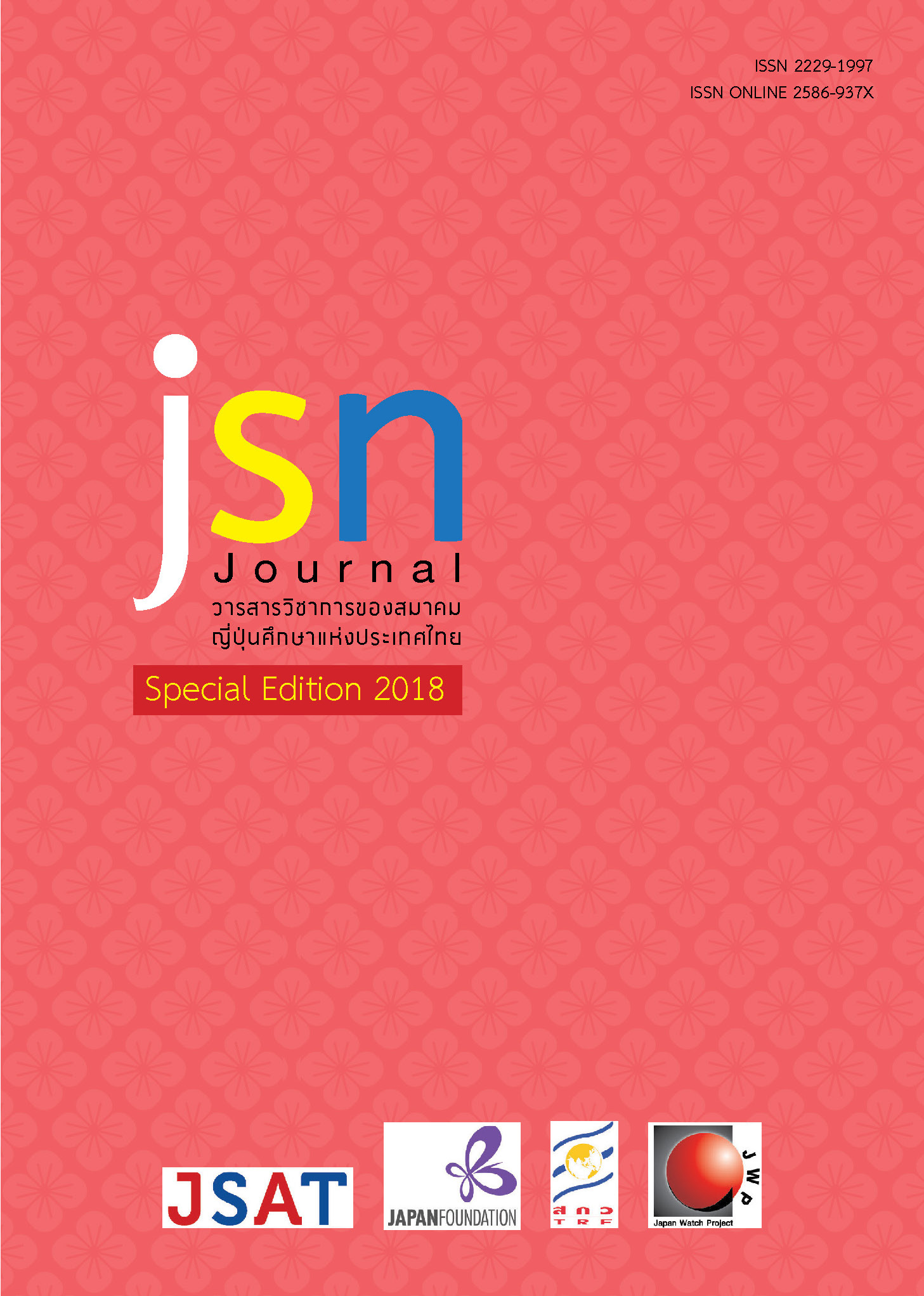The Image of Bonzes and Japanese Buddhist Beliefs in Uji Shūi Monogatari
Main Article Content
Abstract
This research aims to study the image of the Bonzes and Japanese Buddhist Beliefs in Uji Shūi Monogatari.Regarding to the study in Uji Shūi Monogatari, the findings showed They owned various characters which not only represent the positive images but also the negative images representing their beliefs. For examples, positive images show what should be strictly followed according to their deep faith in the Buddhism’s doctrines. The negative images, on the other hand, show forbidden principles they had applied against the Buddhism’s doctrines. In addition, there are also other images which are difficult to interpret due to their ambiguity. Moreover, according to the religious beliefs in Buddhism in the story of Uji Shūi Monogatari claimed that most of the beliefs involved are with a ritual ceremony in Mahayana Practices, which have been used up from Heian period until the early Kamakura period. In this era, it was believed that the story of Uji Shūi Monogatari had been written and documented. Having the beliefs in term of culture
such as pray for rain or for treating illnesses by have shown the purpose of Buddhism practices to attain the achievement for present life and the next life. The practices have apparently demonstrated the profitable lifestyle rather than traditional beliefs in Buddhism as its actual substance in the aspect of “Karma”. The conservative of religious beliefs are like ‘to go around, come around’, ‘to act virtue and omit wickedness’ and
‘to be ashamed from doing bad things and afraid of the bad karma’. The most Buddhism beliefs found in the telling story were in Tendai Practice, Shingon Practice and Jōdo Practice which involve the positive image of the monks in these practices. Furthermore, there were the beliefs in Jōdo Shin practice, Hossō Practice, Kusha Practice and also the fusion of the traditional beliefs in Buddhism between Shugendō Practice and Onmyōdō Practice.
Article Details
ข้อความและข้อคิดเห็นต่างๆ ในบทความเป็นของผู้เขียนบทความนั้นๆ ไม่ใช่ความเห็นของกองบรรณาธิการหรือของวารสาร jsn Journal
References
ประทุม อังกูรโรหิต. (2553). พระมหาปณิธานของพระโพธิสัตว์: ข้อโต้แย้งทางปรัชญาของฌินรัน. กรุงเทพฯ: สพนักพิมพ์ แห่งจุฬาลงกรณ์มหาวิทยาลัย.
สุมาลี มหาณรงค์ชัย. (2550). พระพุทธศาสนามหายาน. กรุงเทพฯ: ศยาม.
อรรถยา สุวรรณระดา. (2558). ประวัติวรรณคดีญี่ปุ่น. กรุงเทพฯ: สำนักพิมพ์แห่งจุฬาลงกรณ์มหาวิทยาลัย.
今井淨圓・廣瀬良弘・村越英裕・望月真澄 (2013).『知っておきたい仏像と仏教』東京 : 宝島社.
大島健彦 (1985).『宇治拾遺物語』東京 : 新潮社.
川端善明 (1978).『鬼と仏と人間の小さな物語』東京 : 平凡社.
小島考乏 (2014).「説話を読み解く : 宇治拾遺物語の戦略」『成城国文学論集』36 : 12.
小林保治、増古和子. (2013).『宇治拾遺物語』東京 : 小学館.
光詮小堀 (1999).『光つたえよ伝教大師のみ心とともに歩んだ道』 東京 : 鈴木出版.
佐藤まなみ (2012).「宇治拾遺物語」における仏教否定定めるの思考―第一0四話猟 師、仏ヲ射事」『立正大学大学院国文学専攻院生会』12 : 11-12.
久木幸男 (1973).『日本の宗教』 東京 : サイマル出版会.
増田秀光 (2005).『仏教人物の事典 : 高僧.名僧風狂の聖たち』大日本印刷株式会社.
馬淵和夫・国東文麿・今野達 (1971).『今昔物語』東京 : 小学館.


